
|
Astronomy Picture Of the Day (APOD)
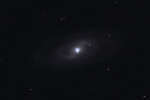 The Einstein Cross Gravitational Lens
The Einstein Cross Gravitational Lens
7.02.2010
Most galaxies have a single nucleus -- does this galaxy have four? The strange answer leads astronomers to conclude that the nucleus of the surrounding galaxy is not even visible in this image. The central cloverleaf is rather light emitted from a background quasar.
 Hong Kong Sky
Hong Kong Sky
6.02.2010
This remarkable scene combines multiple exposures recorded on the evening of January 18th from a waterside perspective in Hong Kong, China. It follows a young crescent Moon, with brilliant planet Jupiter to its left, as they set together in the western sky. Their two luminous trails are faintly paralleled by trails of background stars.
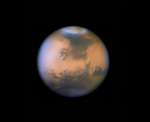 Dust Storm on Mars
Dust Storm on Mars
5.02.2010
It's spring for the northern hemisphere of Mars and spring on Mars usually means dust storms. So the dramatic brown swath of dust (top) marking the otherwise white north polar cap in this picture of the Red Planet is not really surprising.
 Stardust in Perseus
Stardust in Perseus
4.02.2010
This cosmic expanse of dust, gas, and stars covers close to 3 degrees on the sky in the heroic constellation Perseus. Right of center in the gorgeous skyscape is the dusty blue reflection nebula NGC 1333, about 1,000 light-years away. At that estimated distance, the field of view is about 50 light-years across.
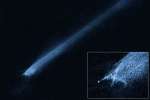 P2010 A2: Unusual Asteroid Tail Implies Powerful Collision
P2010 A2: Unusual Asteroid Tail Implies Powerful Collision
3.02.2010
What is this strange object? First discovered on ground based LINEAR images on January 6, the object appeared unusual enough to investigate further with the Hubble Space Telescope last week. Pictured above, what Hubble saw indicates that P/2010 A2 is unlike any object ever seen before.
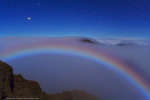 Mars and a Colorful Lunar Fog Bow
Mars and a Colorful Lunar Fog Bow
2.02.2010
Even from the top of a volcanic crater, this vista was unusual. For one reason, Mars was dazzlingly bright two weeks ago, when this picture was taken, as it was nearing its brightest time of the entire year. Mars, on the far upper left, is the brightest object in the above picture.
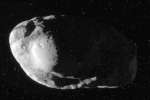 Shepherd Moon Prometheus from Cassini
Shepherd Moon Prometheus from Cassini
1.02.2010
Another moon of Saturn has been imaged in detail by the Cassini spacecraft. Orbiting Saturn since 2004, the robotic Cassini got its closest look yet at Saturn's small moon Prometheus last week. Visible...
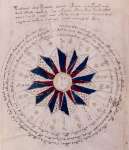 The Mysterious Voynich Manuscript
The Mysterious Voynich Manuscript
31.01.2010
The ancient text has no known title, no known author, and is written in no known language: what does it say and why does it have many astronomy illustrations? The mysterious book was once bought by an emperor, forgotten on a library shelf, sold for thousands of dollars, and later donated to Yale.
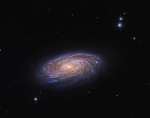 Messier 88
Messier 88
30.01.2010
Charles Messier described the 88th entry in his 18th century catalog of Nebulae and Star Clusters as a spiral nebula without stars. Of course the gorgeous M88 is now understood to be a galaxy full of stars, gas, and dust, not unlike our own Milky Way.
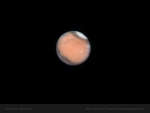 Mars Opposition 2010
Mars Opposition 2010
29.01.2010
Mars is at opposition tonight, opposite the Sun in planet Earth's sky. Of course, it will be easy to spot because Mars appears close to tonight's Full Moon, also opposite the Sun in Earth's night sky in the constellation Cancer.
|
January February March April May June July August September October November December |
|||||||||||||||||||||||||||||||||||||||||||||||||